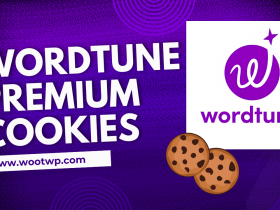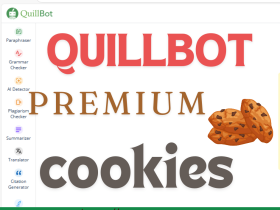Are you looking to skyrocket your business’s online presence through social media marketing? If so, you’ve come to the right place! Choosing the perfect social media platform to showcase your brand can be a game-changer, leading to enhanced visibility, increased engagement, and ultimately, greater success. In this comprehensive guide, we’ll delve into six invaluable tips to help you pinpoint the ideal platform for promoting your business effectively. From understanding your target audience’s preferences to analyzing competitor strategies and exploring advertising opportunities, we’ll equip you with the insights and strategies needed to make informed decisions and maximize your social media marketing efforts. So, whether you’re a budding entrepreneur or a seasoned business owner, get ready to supercharge your online presence and take your brand to new heights!
When you start promoting your business or products on social media, it is important to carefully consider which social media platform you can focus more on to get better results quickly, rather than wasting money and effort promoting on all platforms, leading to mediocre results.
Before creating a social media marketing strategy, you must determine your primary business goal on social media platforms; for example, you may seek to direct visitors to your website, increase followers, or build awareness for your brand. Once you understand your business goals, you can use the following points to determine which platform is most appropriate.
Here are 6 tips to help you choose the right social media platform to promote your business:
1- Focus on the platforms your audience uses:
Pew Research Center statistics indicate that YouTube and Facebook are among the most widely used platforms among adults in the United States, and Twitter and Reddit are among the least used platforms.
Therefore, it is important to focus your marketing efforts on the platforms that your target audience spends the most of the time, for example: if you sell a product to people over the age of 65, you should not bother with platforms such as: Twitter or Reddit because a small percentage of people in this age group use those platforms. Alternatively, you can focus on the apps they use in the first place, such as Facebook and YouTube.
You can use demographic data to choose the platform most used by your target audience, ask your existing customers which apps they use the most, or conduct a survey to collect this data from your website visitors.
2- Make sure the platform is compatible with the content you provide:
Platforms like Instagram and Pinterest focus on photo content, while YouTube focuses on video content. If you mostly produce text-based content, these platforms are not for you, as they rely on visual content.
Unless you’re planning to add designers or videographers to your team to create this content or figure out how to do these things yourself, you’d be better off focusing on text-focused sites like Facebook, Twitter, LinkedIn, and Reddit.
3- Where do your competitors focus their attention?
If your competitors have remarkable success on a particular platform, you can also get good results from promoting on that platform. But if your competitors neglect other platforms, this could be a golden opportunity for you to take advantage of this.
Most companies display links to social media accounts on their websites. Hence, it’s easy to collect data about the platform where your competitors are focusing, and it’s also a good idea to visit their accounts and discover which platform they need to focus their marketing efforts on and start taking advantage of this opportunity.
4- Natural access rate for each platform:
Success on social media requires you to have the right number of followers and YouTube videos, Facebook and Twitter posts, and LinkedIn articles are indexed by Google, meaning people can discover this content through a Google search.
In addition, the algorithms used by these platforms significantly impact the rate at which your posts reach people who follow you. For example, Facebook changed its algorithm in early 2018 to prioritize posts from friends and family. As a result, the platform’s natural reach dropped significantly for many brands.
5- Advertising opportunities offered by each platform:
Low natural reach may be a good influence for you if you are willing to spend money on advertising, as most of these platforms offer advertising opportunities, and some are more accurate than others.

For example, platforms like Facebook and LinkedIn have deep datasets, allowing you to target ads to a specific audience.
6- Avoid working on all platforms at first:
One of the mistakes many companies make when they start marketing through social media platforms is trying to create an account on almost every existing platform. The problem is that keeping content updated on multiple accounts requires a lot of work, and inactive accounts can reflect a negative view of your business.
A better way is to focus on one or two platforms – if you don’t have a team working on social media platforms – to have enough time to create new content and publish it consistently. This will give you more time to increase your followers on these platforms and interact with them more effectively.
Conclusion
When venturing into social media marketing, it’s imperative to choose the right platform for your business to yield optimal results efficiently, rather than spreading resources thinly across multiple platforms and achieving mediocre outcomes. Understanding your business goals is paramount; whether it’s directing traffic to your website, increasing followers, or enhancing brand awareness. To aid in this decision-making process, here are six essential tips:
Firstly, prioritize platforms that align with your target audience’s preferences and demographics. Secondly, ensure compatibility between the platform and the content you provide; visual-centric platforms like Instagram may not suit text-focused content producers. Thirdly, analyze where your competitors focus their efforts and consider emulating their successes. Fourthly, assess the natural accessibility and reach of each platform, considering Google indexing and algorithm changes. Fifthly, explore advertising opportunities offered by each platform, especially those with robust targeting capabilities. Lastly, refrain from spreading resources thinly across multiple platforms initially; instead, concentrate on one or two platforms to consistently produce high-quality content and foster meaningful interactions with your audience. By adhering to these guidelines, you can effectively leverage social media platforms to achieve your business objectives and propel your brand forward in the digital landscape.
























Colt Underwood